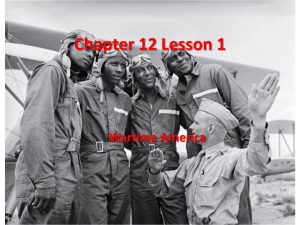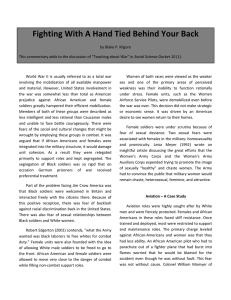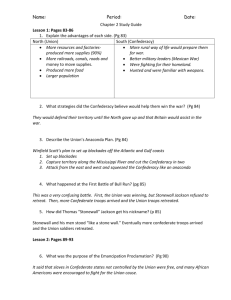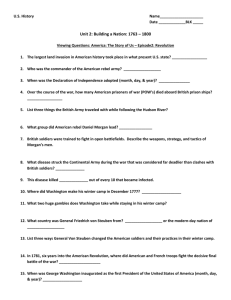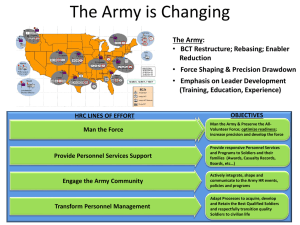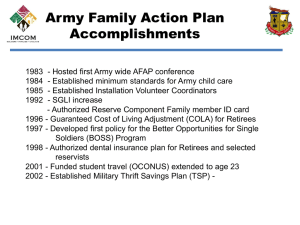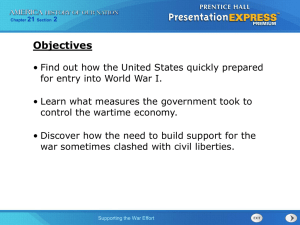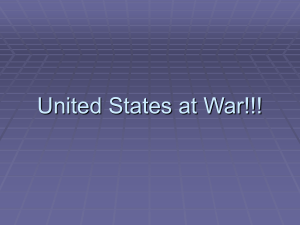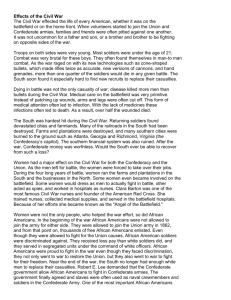AMH Chapter 9 Section 2
advertisement
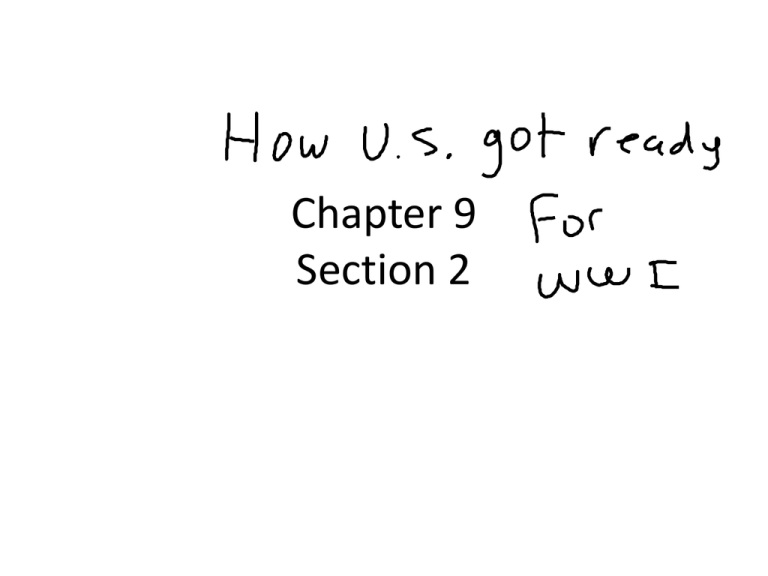
Chapter 9 Section 2 Special Agencies • Congress created special agencies to prepare the economy for war: – The War Industries Board (WIB) – The Food Administration – The Fuel Administration – The National War Labor Board (NWLB) WIB • The War Industries Board (WIB) organized or controlled the flow of raw materials, ordered the construction of new factories, and occasionally set prices. Food Administration • The Food Administration encouraged Americans to grow their own vegetables in victory gardens. Fuel Administration • The Fuel Administration introduced daylight savings time and shortened workweeks to conserve energy. Government Bonds • To fund the war effort, the government raised income taxes and borrowed money through the sale of liberty and victory bonds. NWLB • The National War Labor Board (NWLB) tried to prevent labor strikes from disrupting the war effort. • For workers, it pushed for wage increases (they got more money), an eight-hour workday (shorter work day), and the right to organize unions. • In return, labor leaders agreed not to strike. • Women also took over many now-open industry jobs. Great Migration • In the “Great Migration,” many African Americans left the South to take jobs in northern factories. Migrant Workers • Many Mexicans came to the American Southwest to work for farmers and ranchers. CPI • The Committee on Public Information (CPI) had the task or job of “selling” the war to the American people by hiring advertisers, artists, and others to sway public opinion in favor of the war. Sedition Act & Spying • The Sedition Act of 1918 made any public expression against the war illegal. • The government also searched for espionage, or spying, which was also illegal. • Some civil liberties (freedom of speech, press) were blocked. Soldiers • When the United States entered the war in 1917, it did not have enough soldiers. • Although many people volunteered, more were needed. • Many progressives believed that conscription, or forced military service, was against democratic principles. Draft • Congress, however, believed conscription was necessary and created a new system 0f conscription called selective service. • It required all men between 21 and 30 to register for the draft. Draft • A lottery then randomly decided the order in which individuals were called before local draft boards. • These boards selected or exempted men from military service. • The members of the draft boards were local civilians. • Progressives believed these community members could better decide which men to draft. American Soldiers • Eventually about 2.8 million Americans were drafted. • About 2 million more volunteered, who responded to the nation's call. – Some wanted to fight after hearing about German atrocities. – Others wanted to fight for democracy. Why they volunteered? • Many saw World War I as an opportunity for adventure and wanted to fight for their country. • Troop morale was high for American soldiers during World War I, despite losses. • During the war 50,000 Americans died in combat and more than 200,000 were wounded. African American Soldiers • About 42,000 of the 400,000 African Americans served in racially segregated units under white officers and often encountered discrimination within the army. who were drafted served in the war overseas. • Despite this, many African Americans fought with distinction in the war. • Two African American divisions fought in battles along the Western Front. Women in the Navy • Women officially served in the armed forces for the first time in World War I. – They served in noncombat positions. • With men serving in combat, the armed forces faced a shortage of clerical workers. • The navy enlisted women to serve as clerical workers, radio operators, electricians, chemists, and other occupations. Women in the Army? • The army, however, refused to enlist women. – It hired women as temporary employees to fill clerical jobs. • The only women to actually serve in the army were the army nurses. – Women served as nurses in the navy, too.
